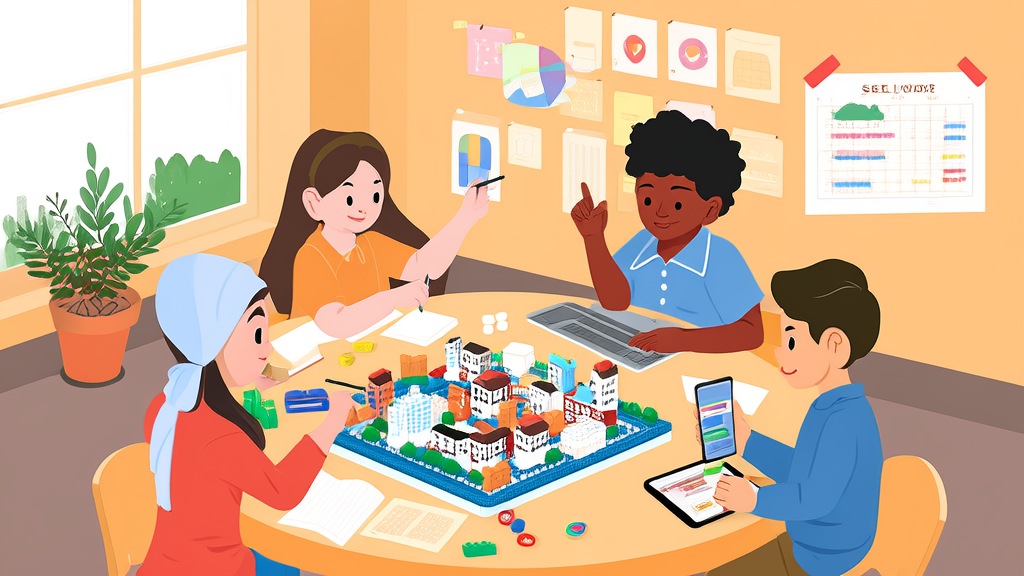9% Academic Boost: How SEL and PBL Are Revolutionizing K12 Education in 2025

Empowering the Future: Navigating K12 Education in 2025
Welcome to the ever-evolving world of K12 education, where innovation and tradition blend to create a dynamic learning environment. As we stand at the midpoint of 2025, it's an exciting time for both educators and parents as new methodologies, technologies, and research insights continue to shape how our children learn and grow. In this blog post, we will explore the latest trends, share practical tips, and highlight success stories that can inspire and guide you in supporting the next generation of learners.
Latest Teaching Methodologies and Their Effectiveness
The landscape of teaching has seen significant shifts, with a growing emphasis on student-centered and experiential learning. One of the most effective methodologies is Project-Based Learning (PBL). PBL engages students in real-world problems, fostering critical thinking, collaboration, and creativity. For instance, a middle school in California implemented a PBL unit on renewable energy, where students designed and built solar-powered devices, significantly enhancing their understanding of science and engineering principles.
Another notable approach is Flipped Classroom, where students are introduced to new content at home through videos or readings, and class time is used for deeper exploration and problem-solving. This method has been shown to improve comprehension and retention, as students have more opportunities to apply what they've learned in a guided, interactive setting.
Child Development Insights and Research
Recent research in child development highlights the importance of social-emotional learning (SEL) in academic success. SEL focuses on developing self-awareness, self-management, social awareness, relationship skills, and responsible decision-making. A study by the Collaborative for Academic, Social, and Emotional Learning (CASEL) found that schools implementing SEL programs saw a 9% increase in academic performance and a 10% decrease in behavioral issues.
Additionally, the concept of growth mindset—the belief that abilities and intelligence can be developed through dedication and hard work—has gained traction. Schools that promote a growth mindset see students who are more resilient, persistent, and open to challenges. Teachers can foster this mindset by praising effort over innate ability and encouraging students to view failures as learning opportunities.
Educational Technology Trends
Technology continues to play a pivotal role in K12 education, with several trends emerging in 2025:
- Artificial Intelligence (AI): AI tools like adaptive learning platforms and virtual tutors provide personalized learning experiences, helping students progress at their own pace. For example, the AI-powered platform "DreamBox" uses data analytics to adjust the difficulty of math problems, ensuring that each student is appropriately challenged.
- Augmented Reality (AR) and Virtual Reality (VR): These technologies offer immersive learning experiences, making complex concepts more accessible and engaging. A high school in New York uses VR to take students on virtual field trips to historical sites, enhancing their understanding of history and culture.
- Collaboration Tools: Platforms like Google Workspace and Microsoft Teams facilitate collaboration and communication among students and teachers, promoting a sense of community and teamwork. These tools also support remote and hybrid learning models, which have become increasingly relevant in recent years.
Practical Tips for Parents and Teachers
Here are some actionable tips to help you support your students' educational journey:
- For Parents: Create a dedicated study space at home, free from distractions. Encourage a consistent routine and set realistic goals. Stay involved in your child's education by attending parent-teacher conferences and volunteering at school events. Additionally, foster a love for reading by reading together and discussing books.
- For Teachers: Integrate technology thoughtfully, ensuring it enhances rather than distracts from learning. Provide regular feedback and celebrate small victories to build students' confidence. Incorporate SEL into your curriculum through activities that promote empathy and self-reflection. Finally, stay informed about the latest research and best practices in education to continuously improve your teaching methods.
Success Stories and Case Studies
One inspiring success story comes from a rural school district in Texas, which implemented a comprehensive SEL program. Over three years, the district saw a 25% reduction in disciplinary actions and a 15% increase in graduation rates. Students reported feeling more connected to their peers and more motivated to succeed academically.
Another case study involves a charter school in Chicago that adopted a blended learning model, combining traditional classroom instruction with online resources. The school saw a 20% improvement in standardized test scores and a 30% increase in student engagement. Teachers noted that the model allowed them to provide more individualized support, leading to better learning outcomes.
Conclusion
The future of K12 education is bright, with innovative methodologies, cutting-edge technology, and a deep understanding of child development driving positive change. By staying informed and proactive, parents and teachers can create a nurturing and effective learning environment that prepares students for success. Let's continue to collaborate, innovate, and inspire the next generation of leaders and thinkers. Together, we can make a lasting impact on the lives of our children and the world they will inherit.